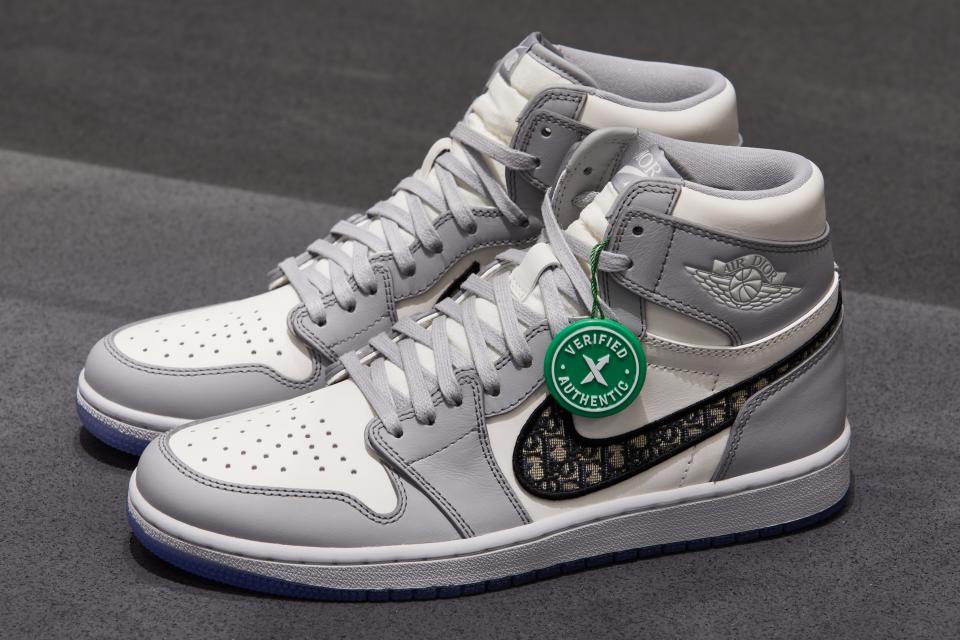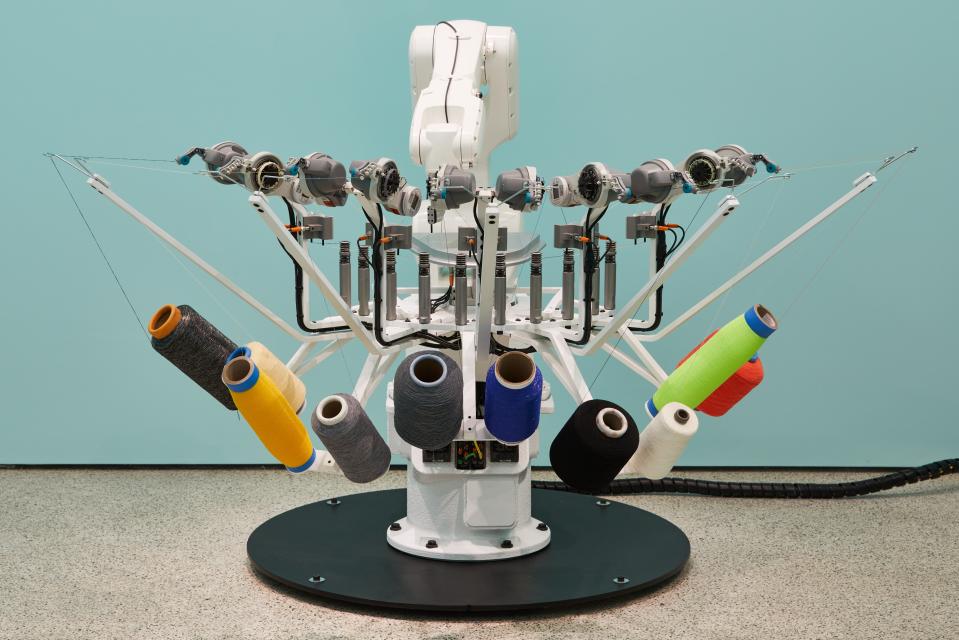Sneakers Unboxed at the Design Museum review: Step into a world of obsession

The price is right? A pair of Jordan x Dior Jordan 1 Retro High sneakers, which regularly resell for more than £10,000
(Ed Reeve)Even if you don’t think you’re a part of sneaker culture, you almost certainly are. Ever owned a pair of trainers made by Nike, Adidas, New Balance, Puma, Vans, Converse or Diadora and worn them in your everyday life, rather than just for sport? Well, guess what: you’re a part of sneaker culture.
It’s a multi-billion dollar craze that’s been swelling for decades, and whose cultural reach has spread around the world — as has its ecological impact. How exactly we got to this point, and where it all goes next, is explored in Sneakers Unboxed: Studio to Street, a new exhibition at the Design Museum.
For those largely uninitiated in the ways of the sneakerhead, a crash course in its defining features is offered right at the beginning. A labelled diagram explains the “anatomy” of a sneaker, from eyelet to aglet, while a glossary brings us up to speed on the lingo (QS, short for quickstrike, means “relatively rare sneakers, typically only available in stores that carry exclusive pairs”, for example). There’s even an explanatory poster on all the different ways to lace your shoes (there are many).
There’s also a brief overview of just how mind-bogglingly supercharged this whole thing is. In 2020, the most valuable pair of newly released shoes traded through the online marketplace StockX regularly sold for more than £10,000. Another graphic highlights a stark geographical divide: the East manufactures, and the West buys, with the anomaly of China, which does both to excess.
But then, moving into the first room, things are taken back to more humble beginnings. We learn that this behemoth wasn’t born in the boardroom, but has instead “become ubiquitous thanks largely to the influence of young people from diverse inner-city neighbourhoods”. Sneaker culture as we know it sprang from the streets of New York, and during the tournaments of streetball (a less official cousin of basketball, more prone to crowd-pulling showmanship), where fans would try to emulate their on-court heroes by wearing the same shoes.
We see how clever marketing moves, securing endorsements from basketball stars such as Walt ‘Clyde’ Frazier, as well as musicians including Run-DMC, amped up the must-have allure of the shoes, and helped them become lifestyle necessities, rather than just sports gear. No sneaker exhibition would be complete without mention of Michael Jordan and his Nike collaboration, the game-changing Air Jordan brand. But thanks to a string of documentaries about Jordan in recent years, it feels like his contribution to sneaker culture, humongous as it is, has dominated the conversation, and so it’s nice to be reminded of all the other subcultures that have played their part in shaping it all.
What about the California skaters of the Seventies and Eighties, who championed the hard-wearing benefits of Vans? And how about the black Londoners of the Nineties who fused Jamaican style with colourful running shoes such as Nike’s Air Max 1? The football casuals played their part, too, with team allegiances coding their fashion choices, seeking out rare Diadora pairs from the continent to out-do their rivals. And then there were the grime pioneers of the Noughties, who reignited that deification of the Air Max — the exhibition makes a point of the fact that Dizzee Rascal wore a pair on the cover of his genre-defining album, Boy In Da Corner.

We’re shown how sneakers have infiltrated the world of high-end fashion, seducing the likes of Balenciaga, Rick Owens and Versace, and all of the bombastic designs that have been created through those collisions. Another section, which focuses on the performance side of the shoes, has some fascinating examples of the boundary-pushing science that’s worked its way into sneakers — one prototype pair, a collaboration between MIT Design Lab, Puma and Biorealize, features live bacteria that eats away at the hottest parts of the shoe material when being worn so that heat can pass through.
All of which to say: there are some incredible shoes here. It’s quite astonishing to see all these pairs together in one place, a technicolour medley of shapes and styles, especially when you consider how rare some of them are, and how valuable; you can only imagine what the combined price-tag of them all must be.
Most are in great condition, but some look worse for wear — the result of low-quality materials wearing down over the years, more than anything. It’s an inevitable part of sneaker culture, which relies on cheap mass production, but it makes a subtle point that is expanded upon in the final section, dedicated to sustainability.

With production increasing and millions of pairs ending up in landfills, the industry’s environmental impact is severe. But, as we learn here, steps are being taken by brands large and small, from a focus on using sustainable materials where possible, to adapting the ways in which demand is met (a futuristic-looking shoe-making robot, featured here, is one way that production could become more efficient over time).
But there’s still an incredibly long way to go. And the global obsession with what we put on our feet shows no sign of abating. Whatever happens over the coming decades, this exhibition makes clear that the impact of sneaker culture has been truly seismic, and affects us all — whether you realise it or not.
May 18 to October 24, Design Museum, W8, designmuseum.org
Read More
Jean Dubuffet: Brutal Beauty at Barbican review - brut, not boring
Epic Iran at the V&A preview - the true story of a crucible of culture
Heather Phillipson Tate Britain Commission review: Bonkers. I love it.

 Yahoo Sport
Yahoo Sport 





































